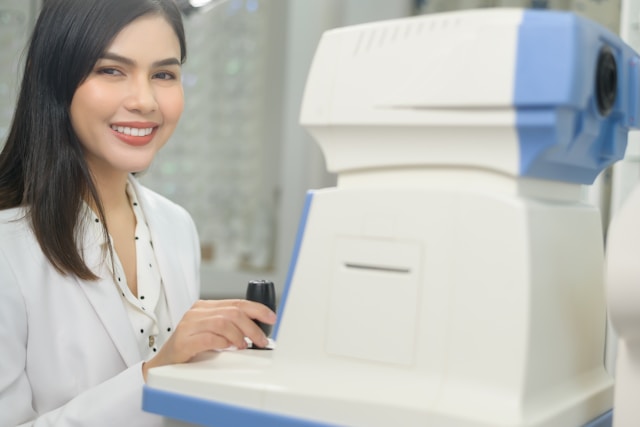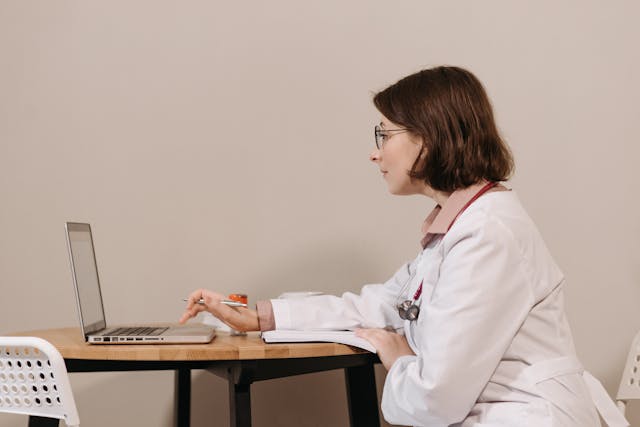Introduction
The healthcare industry constantly evolves, with healthcare technology leading this transformation. From electronic health records (EHRs) to artificial intelligence (AI), medical technology is critical in improving the efficiency and quality of healthcare services. Healthcare providers use these advancements to streamline workflows, reduce medical errors, and enhance patient outcomes. However, while the benefits are evident, challenges arise that cannot be overlooked.
While healthcare technology offers innovations that improve healthcare services, such as more precise diagnostics and treatment plans, it also presents challenges, including potential data security risks and the steep learning curve for healthcare providers. Healthcare technology can improve care delivery and create barriers if not properly implemented. By examining these factors, stakeholders in the healthcare industry can make informed decisions about the future of technology integration in the healthcare sector.
Healthcare professionals must weigh the advantages and limitations, ensuring that technology can enhance care without introducing new obstacles. This guide aims to give more insights and a better understanding of the advantages and disadvantages of technology in healthcare.
Pros of technology in healthcare
Technology offers many advantages that can revolutionize healthcare delivery and empower healthcare professionals. Below, we explore key benefits that are reshaping the healthcare sector:
Enhanced patient care
One of the most significant advantages of technology in healthcare is its ability to enhance the quality of patient care. EHRs offer healthcare facilities a centralized platform for accessing patient data, improving care coordination across multiple providers. This ensures accurate patient information is available at all stages of the treatment journey, reducing the likelihood of medical errors. Additionally, remote patient monitoring and telehealth solutions provide care access to patients in rural or underserved areas, broadening the scope of healthcare services.
Improved efficiency and productivity
The integration of technology in healthcare has streamlined many administrative and clinical workflows. EHRs minimize the need for manual data entry, freeing up time for healthcare providers to focus on patient care. Appointment scheduling, billing, and communication tools enable healthcare professionals to function more efficiently, reducing the administrative burden on clinical staff. These technologies also reduce medical errors by offering accurate patient information and enhancing clinical and operational efficiency.
Advanced diagnostics and treatment
Advances in medical technology have revolutionized diagnostic and treatment capabilities. Medical imaging technologies such as MRI and CT scans allow for earlier detection and more precise diagnoses. Moreover, AI is increasingly assisting in interpreting complex datasets, significantly contributing to personalized treatment plans. This approach enhances clinical decision-making, resulting in better patient outcomes across the medical field.
Empowered patients
Technology can empower patients to take a more active role in their health management. Patient portals provide secure access to medical records and healthcare data, allowing patients to view test results and medication information and communicate with their healthcare providers directly through a messaging system.
Wearable medical devices and health apps can also track health data (heart rate, sleep patterns) and promote preventive care measures by reminding patients to take medications or complete exercises.
Research and innovation
Technology plays a crucial role in advancing medical research. Large datasets and AI-powered analytics can accelerate research efforts by identifying patterns and potential breakthroughs in disease treatment and understanding. Telemedicine is a good reason for lower healthcare costs and facilitates participation in clinical trials for patients who might otherwise struggle with travel or location barriers.
These are just some of the numerous ways technology contributes to a more efficient, effective, patient-centered healthcare system. However, it's essential to acknowledge that technology also presents specific challenges that must be addressed, which we'll explore in the next section.
Cons of technology in healthcare
While digital healthcare technology offers numerous advancements, it also presents several disadvantages that healthcare professionals must carefully navigate. Below, we explore the primary challenges and risks associated with the widespread integration of technology into healthcare practices:
Data security and privacy concerns
One of the most critical disadvantages of technology in healthcare is the increased risk of data breaches and the exposure of sensitive data. Electronic medical records (EMRs), while streamlining the ability to access patient data, can also become targets for cyberattacks. If these systems are compromised, it can lead to identity theft, legal issues, and a loss of patient trust. Ensuring robust cybersecurity measures are in place is essential to protect both operational data and personal patient information.
Potential for errors and misdiagnosis
Another significant challenge posed by healthcare technology is the potential for medical errors. AI-powered diagnostics and automated systems require constant validation and human oversight. Misinterpreting vital signs or operational data could lead to incorrect diagnoses or delayed treatments. This over-reliance on technology might cause healthcare professionals to overlook crucial aspects of patient care, underscoring the importance of maintaining a balance between technological tools and human judgment.
Increased healthcare costs
While technology can potentially improve efficiency, the financial investment required to implement and maintain these systems can significantly increase healthcare costs. The expenses can strain healthcare budgets, from purchasing new software to training staff and maintaining equipment, especially for smaller practices. Tech companies often provide proprietary solutions, and recurring costs like licensing fees or technical support add to treatment costs. This creates a barrier for healthcare providers in underserved areas, widening the gap in healthcare access.
De-personalization of care
One of the most noticeable disadvantages of technology in healthcare is the risk of depersonalizing patient care. Increased use of automated systems, EHRs, and mobile health apps can reduce face-to-face interactions, which are essential for building trust and rapport with patients. While these technologies can streamline administrative tasks and improve efficiency, they may lead to a more transactional and less empathetic experience, affecting patients' quality of care.
Digital divide and access issues
The fourth industrial revolution has ushered in technological advancements, but not all patients benefit equally. Many lack the digital literacy or access to devices to navigate digital healthcare technology effectively. This digital divide can further exacerbate healthcare disparities, limiting the accessibility and usefulness of these innovations. Healthcare professionals must consider alternative solutions for patients who struggle to engage with technology, ensuring inclusivity in their care approaches.
System integration and interoperability issues
One challenge with major technologies involved in healthcare is ensuring seamless system integration. Many systems, including EMRs and mobile health solutions, lack interoperability. This can make it difficult for healthcare providers to share patient data across different platforms, reducing the potential benefits of these technologies. When systems do not communicate effectively, it can lead to gaps in care, further complicating treatment plans and patient management.
Weighing the pros and cons
Technology can be a powerful tool to enhance healthcare delivery but with careful planning and implementation. Technology offers a vast array of benefits for healthcare professionals and patients alike. Many technologies hold immense potential for better healthcare management, including:
- EHRs: Centralized platforms for EHRs improve care coordination, providing a comprehensive view of a patient's medical history across different institutions.
- Telehealth and remote monitoring: Technologies like video conferencing and wearable devices allow for increased patient access to care, especially in remote areas or for patients with mobility limitations.
- Advanced diagnostics and treatment tools: Medical imaging advancements offer more precise diagnoses, while AI makes inroads in disease detection, treatment planning, and even suggesting personalized approaches.
- Patient engagement tools: Patient portals and health apps empower patients to take a more active role in their health by providing secure access to medical records and promoting preventive care measures.
However, to maximize the benefits of advanced technology and minimize drawbacks, consider these factors when using Technology in Healthcare:
- Patient needs: Technology should enhance care, not replace human interaction. Focus on how specific technologies address individual patient needs and preferences.
- Data security and privacy: Robust cybersecurity measures are crucial. Invest in secure platforms and maintain rigorous data protection protocols.
- Human oversight: Technology should complement clinical expertise. Utilize AI and automated systems for data analysis and diagnostics but maintain human oversight for decision-making and critical thinking.
- Cost-effectiveness: Evaluate the long-term cost implications, including potential savings through improved efficiency alongside the initial investment.
- Digital divide: Bridge the gap by offering resources and training to help patients effectively understand and utilize healthcare technologies.
- Transparency and communication: Communicate openly with patients about how technology is used in their care. Explain data collection, storage, and security measures to build trust and address concerns.
By carefully considering these factors and focusing on patient-centered care, healthcare professionals can leverage technology's strengths to create a more efficient, effective, and secure healthcare environment.
Carepatron: The best healthcare OS available
Carepatron, a comprehensive healthcare operating system, empowers you to harness the power of technology within your practice. It seamlessly integrates with existing EHR and telehealth platforms, creating a centralized hub for managing patient data and communication. This eliminates the need to juggle multiple healthcare systems, saves valuable time, and reduces errors.
Carepatron goes beyond streamlining workflows. It fosters a patient-centered approach by providing a user-friendly patient portal. Patients can access medical records, schedule appointments, communicate securely with you, and manage their health information conveniently. Additionally, Carepatron prioritizes data security with HIPAA-compliant features and robust encryption protocols.
Carepatron is more than software — it's your partner in navigating the ever-evolving healthcare management landscape. Experience the difference Carepatron can make. Visit our website to learn more and start your free trial today!






.jpg)





.jpg)



.jpg)


.jpg)

.jpg)
.jpg)
.jpg)
.jpg)

.jpg)
